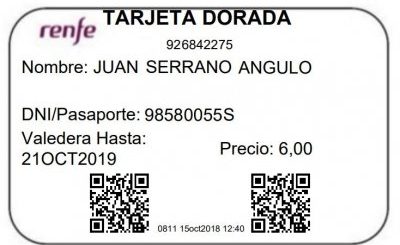Ouigo and inOui TGV Trains: What is the Difference?
If you’ve travelled by train around France, you might have seen TGV trains branded as inOui and others branded as Ouigo, leaving you to wonder about the main difference between these two high-speed services.
So, what exactly is the difference between an Ouigo and an inOui train, and why do these high-speed trains have such strange names? Join me on board the French high-speed trains as we find out more!
TGV high-speed trains
The French are the pioneers of European high-speed rail travel, and the TGV is arguably the most well-known train on the continent.
Indeed, French TGV trains are undeniably fast, connecting Paris with Bordeaux in 2 hours and 3 minutes or Paris with Marseille in just over 3 hours, all while offering excellent comfort on board.
For many decades, the word TGV was used not only as the name of a French high-speed train but also to denote a French high-speed service.
However, the French national railways, SNCF, has strangely decided to drop this powerful international brand name and now classifies their TGV trains as either inOui or Ouigo services.
This began in 2013, when SNCF launched Ouigo as the low-cost brand for their TGV trains, promising affordable fares with a business model similar to that of budget airlines, but then on French railway tracks instead of in the skies.
To differentiate a low-cost Ouigo service – which is essentially operated by the same TGV trainsets as regular TGV services – the French decided in 2017 to introduce a new name for the latter, branding their standard high-speed services as inOui.

Ouigo and inOui TGV trains. ©AndyBTravels
Difference between inOui and Ouigo
So there you have it: Ouigo is essentially a low-cost TGV, while inOui is a regular TGV service, like the ones France has known since these high-speed trains were first introduced in the early 1980s.
Although the actual trains are essentially the same whether you’re on an inOui or Ouigo service, and they travel at the same speeds, there are some differences – not only in the business model but also in the passenger experience.
The inOui TGV services always offer both first and second class, while Ouigo trains are second class only.
Ouigo trains have no dining car or catering services on board, whereas inOui TGV trains feature a bistro counter where you can buy food and drinks.
While inOui trains have standard luggage restrictions, Ouigo trains are much stricter, with extra fees for additional or larger-than-usual bags.
You can buy inOui train tickets at station ticket offices, while Ouigo tickets are only sold online.
Although Ouigo trains run on many premium routes in France, they tend to use secondary stations more often, a strategy borrowed from budget airlines that also works on the railway tracks due to the lower station fees charged to rail operators.
Another major contrasts is that Ouigo tickets are sold solely as point-to-point tickets, meaning if you buy a separate connecting ticket, you make the connection at your own risk and can’t demand to be placed on another service if you miss it due to a delay.

inOui TGVs at Paris Montparnasse. ©AndyBTravels
Travelling on Ouigo
The same rules apply to Ouigo as to low-cost airlines: if you know what to expect and follow all the guidelines, it isn’t necessarily a bad experience, and the lower ticket prices could certainly be worth it.
Ouigo trains use the same TGV trainsets as inOui trains, and the second-class seats offer the same comfort, ensuring a smooth ride at high speeds.
Another difference between inOui and Ouigo trains is that while you can choose your seat on inOui trains by specifying preferences (upper or lower deck, aisle or window), the cheapest booking classes on Ouigo trains only allow you to select your exact seat for a surcharge, much like a low-cost airline.
The fees for this are generally not high (between €3 and €7 depending on the seat) and, in my opinion, are absolutely worth it, as there are a few seats on Ouigo TGV trains you would want to avoid at all costs.
Some of the lower deck seats have a 1+3 seat configuration, and those three-abreast seats are best avoided if you’re travelling solo or as a couple.
Also, not all seats have access to a power socket, so be sure to choose a seat with one (this is clearly indicated on the seat map by the French term “avec prise”).
Regional trains
If you think names like inOui and Ouigo are weird and confusing, wait until you see the names that transport executives have given to French regional trains.
Click on the link above to explore the absurd world of French train branding in all its glory!
Conclusion
French TGV trains are among the best-known in Europe, yet railway executives at SNCF decided it was a great idea to give them the brand names inOui and Ouigo.
The difference between an inOui and Ouigo TGV is that the former is a regular TGV service, while the latter is a low-cost TGV service with fewer on-board amenities and stricter rules regarding ticketing and reservations.
Essentially, both inOui and Ouigo services use the same TGV trainsets, travelling at the exact same high speeds.
Just be aware of the differences and what to expect, and you’ll have a great ride, whether it’s on an inOui TGV or an Ouigo TGV.





